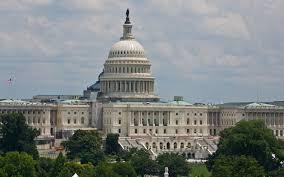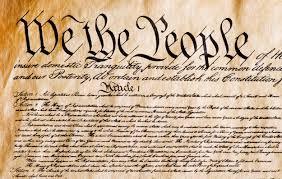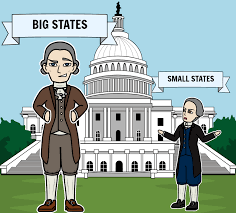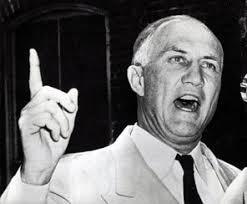
I previously wrote that Democrats, in power, should refrain from exercising it in ways that might look illegitimate — that is, like Republicans have. Even though turnabout might seem fair play, we must try to de-escalate tribalistic partisan warfare. Nevertheless, it’s time to end the Senate filibuster. It’s something very doable, and would help significantly to fix what’s wrong with today’s America.
President Biden did pledge to try to work with Republicans. But it’s becoming clear that most of the GOP, rather than recovering from Trump insanity, is burrowing deeper into it. Incapable of cooperating rationally in the national interest, they have forfeited their seat at the table. We’ll have to work around them.

We venerate our Constitution. It was trailblazing in 1787 and has stood the test of time, not only maintaining our democracy, but enabling us to progressively broaden it. Even through a civil war; and Trump. Yet it’s actually ill-suited to our modern reality and now in many ways has become an obstacle not only to continued progress but even to basic democratic values.
One factor is the difficulty of amending it, which requires agreement by three-quarters of states. Almost inconceivable today for anything controversial, given our partisan divisions. We’re now pretty much stuck with the Constitution we’ve got.

It established the two houses of congress differently, the House of Representatives apportioned by population, while in the Senate all states are represented equally. (In fact, that’s the one thing the Constitution explicitly says cannot be changed by amendment.) This was to allay small-state fears that the big ones would be too powerful. The founders probably didn’t foresee how that would play out in a fifty-state union with many small states. Size might not matter much if it didn’t correlate with other characteristics. But the big states are big because they have big cities; small states don’t, tending to be more rural. And whiter.
And with two senators each, those small rural ones are way overrepresented. Problem enough if the Senate worked by majority rule. But the filibuster rule means it normally takes 60 out of 100 votes to pass a bill. That magnifies small state clout even more; 41 senators representing an even smaller fraction of the population can stymie the other 59. And given such partisan division that neither party can hope to have 60 senators, the result is the gridlock and government paralysis we’ve come to expect.
It wasn’t always like this. The filibuster rule is not in the Constitution. Originally both houses of Congress had unlimited debate. That soon became unworkable in the House of Representatives, having so many members, so they limited debate. The smaller Senate — only 26 members at the start — saw itself as a more collegial, deliberative body.
Not until the 1850s did “filibustering” become a thing — Senators preventing a bill’s passage by keeping debate going. But that was rare. Only in 1917 was it deemed necessary to institute a way to end debate — called “cloture,” it was considered an extraordinary measure, and hence required a two-thirds vote. But such situations were still rare, until the 1950s when southerners filibustered to block civil rights legislation.
It was of course hard to get 67 Senate votes for anything. Finally, in 1975, they reduced the requirement to 60 votes, thinking to make cloture, and bringing bills to a vote, easier.

But the result, perversely, was the opposite. It would never have seemed reasonable to effectively require 67 votes for every bill. But 60 felt different. Another factor: in the past, a filibuster meant you actually had to keep debating. Strom Thurmond set the record in 1957, holding the floor talking for 24 straight hours. Now, however, it became a given that every major piece of legislation would require cloture with 60 votes; the actual speechifying dispensed with. Thus giving a minority an effortless automatic veto over everything.
Again, none of this was required by the Constitution; but it became a hardened status quo. Changing the filibuster rule was called the “nuclear option,” as if tantamount to an act of war. But during the Obama administration, Republicans were using the rule to block his judicial nominations, so Majority Leader Harry Reid went for a limited nuclear option, scrapping the 60-vote rule just for those nominations. Then, when Republicans got control of the Senate, they extended this to Supreme Court nominations, to keep Democrats from blocking Trump appointments.
What all this shows is that the 60-vote rule is by no means sacrosanct. Its resultant minority veto is a major factor undermining the health of our body politic. And it’s one that actually has an easy fix: the Senate can change the rule by a simple majority vote. For that, 60 votes are not needed!
And once that’s done, a lot of other problems can be tackled effectively. A big one is immigration. Desperately needed reform has been stymied for decades by the filibuster rule. Without it, immigration reform should happen quickly. Another priority is election reform. We need to set national standards, to allay concerns about fairness and fraud. But particularly to outlaw all the ways Republicans use to make voting harder. We should also make DC and Puerto Rico states, likely adding four Democratic senators and reducing the perverse Republican small state advantage.

Yes, they will howl bloody murder, accusing Democrats of a power grab. That will dominate talking heads and internet blowhards for, oh, maybe two or three days. Then will be forgotten as we move on to something else. After all, the Senate being able to pass a bill by majority vote shouldn’t seem very radical. We’ll quickly get used to it, and if we think of it at all, will wonder why the previous bizarre rule wasn’t junked long before.
